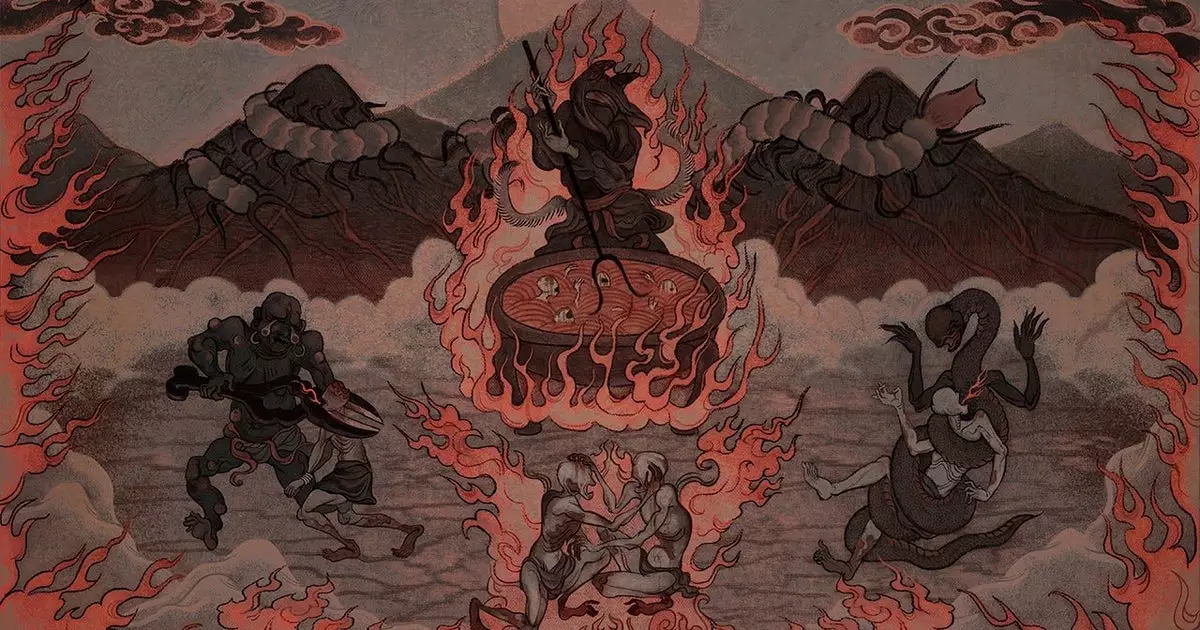In the ever-evolving universe of survival horror gaming, “Labyrinth Of The Demon King” emerges as a grotesque yet fascinating creation that marries the chilling atmospheres reminiscent of classics like Silent Hill with the formidable gameplay mechanics of retro RPGs, particularly echoing From Software’s archaic masterpiece, King’s Field. Released just days ago, this title has quickly captivated the attention of gamers who find beauty in the grotesque and relish the unforgiving nature of its world. It is not merely a game; it is an experience steeped in dread, characterized by its lack of trustworthiness and an overwhelming sense of impending doom.
Set in a mythological representation of feudal Japan, the game plunges players into a twisted narrative filled with deceit and betrayal. The primary goal revolves around a quest to hunt down a malevolent yokai, a creature steeped in folklore that led your lord into a deadly trap. Unlike many contemporary offerings drenched in flashy graphics and convoluted plots, this game opts instead for a raw, almost primal approach, forcing players to navigate through grime-laden environments inhabited by grotesque creatures that can only be described as abominations. The engagement with these entities is unsettlingly intimate; they do not just threaten you; they also struggle against one another, presenting an atmosphere of chaos that invites both curiosity and terror.
Survival in a Distorted Reality
A striking feature of Labyrinth Of The Demon King is its intrinsic and brutal method of gameplay. In an era dominated by regeneration mechanics and weapon upgrades, this title takes a gamble by providing players with rather basic equipment—a bottle of sake, tattered bandages, and a katana that looks less like a weapon and more like an extension of the decay surrounding it. This fosters a sense of vulnerability; every engagement feels like a life-or-death struggle rather than a tactical show of prowess. Your resources are limited, and every encounter can result in significant setbacks, as enemies swarm with the frenetic energy of a desperate mob.
Among these enemies are the so-called “filthbastards,” grotesque creatures that haunt the player’s journey through decaying houses and shadowy corners. The surrealism of the combat mechanics—stomping cockroaches to regain health or the accidental displacement of opponents due to careless kicks—adds a layer of dark humor to the otherwise disturbing gameplay. It is a dance with danger where every misstep could lead to a swift demise. This creates a palpable tension, forcing players to mindfully consider their actions rather than relying on spectacular combat prowess.
A Captivatingly Reliable Unreliability
A testament to its horror heritage, the visuals echo the eerie aesthetic of early PlayStation titles, embodying styles that charm players nostalgically while also evoking genuine fear. From the dithered textures to the jittery camera angles, the game invites players to look deeply into its shadows, mirroring the psychological terror that permeated earlier horror games. While some might argue that this aesthetic is a limitation, it is, in truth, a conscious choice—a return to the basics that emphasizes atmosphere over over-polished presentations.
The auditory landscape is equally haunting, filled with unsettling ambient sounds that breathe life into the otherwise deserted world. The interplay of silence and grotesque cacophony feeds into the anxiety levels of the player, constructing a constant reminder of lurking dangers. The presence of locked doors and uncharted territories further imbues the exploration with urgency, veiling sense of dread around every corner.
Fuels for the Inner Descent
As players traverse the remnants of this eerie world, they may find themselves lost not just physically but emotionally, as the game refuses to coddle them with hand-holding tutorials or easily accessible checkpoints. The pursuit of a blacksmith trapped in a pantry, apparently graced with the ability to mend your ineffective weapons, reflects the player’s desperate yearning for progression in a game that revels in poverty. Here, every small victory feels well-earned, beckoning with the promise of a slightly less tormenting outcome.
Despite the challenges, there’s a peculiar satisfaction in engaging with something that dares to explore the boundaries of human fear and despair. “Labyrinth Of The Demon King,” through its unique amalgamation of gameplay and storytelling, serves as a testament to the potential of horror games, encapsulating an experience that evokes a throbbing undercurrent of emotion in every player. Ultimately, waiting for what lies behind the next door compels players to confront their own apprehension, anchoring them firmly within this nightmarish realm.

